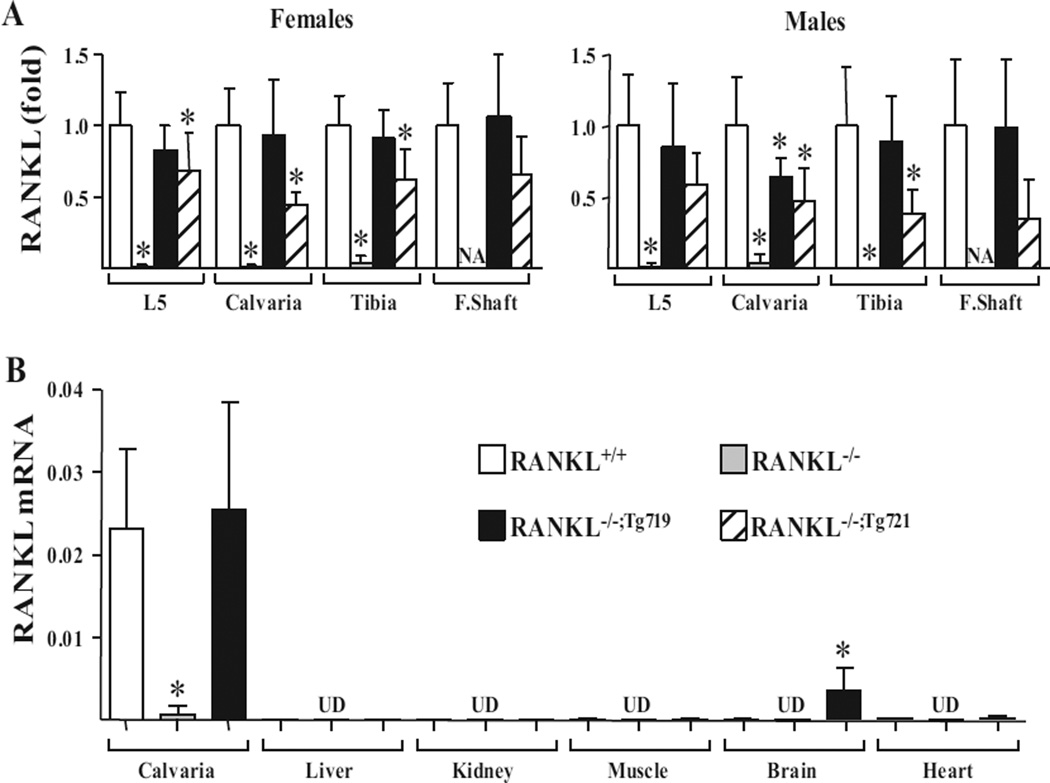Fig. 3.
The mTnfsf11 transgene is expressed in a tissue-specific manner with mRNA levels comparable to those of endogenous Tnfsf11. (A) RANKL mRNA levels in (L5), calvaria, tibia, and F.Shaft of 5-week-old male and female mice were measured by quantitative RT-PCR (n = 4 to 16 mice/ genotype). RANKL mRNA levels are indicated for each tissues as fold-change normalized to RANKL+/+ levels. Due to lack of marrow space and therefore F.Shafts in RANKL−/− mice, RANKL mRNA measurements could not be obtained (NA). (B) RANKL mRNA levels in calvaria, liver, kidney, muscle, brain, and heart of 4-week-old male RANKL+/+, RANKL−/−, and RANKL−/−;Tg719 mice measured by quantitative RT-PCR (n = 4 mice/genotype). All quantitative RT-PCR values were normalized to the housekeeping gene beta-actin and indicated as mean ± SD. All statistical comparisons were derived using a one-way ANOVA analysis. * p <0.05 compared to the wild-type group. NA = not available; F.Shaft = femur shaft; UD = level undetectable by RT-PCR; L5 = lumbar vertebra 5.

